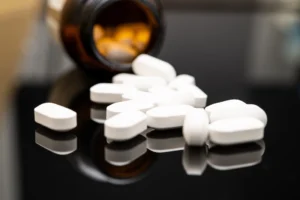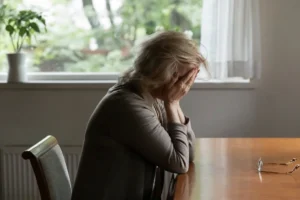With addiction treatment, art therapy, and music therapy are both holistic forms of care. Art and music therapy can be:
- Painting with watercolors or acrylic paints
- Coloring in a coloring book
- Making dioramas
- Making collages with scrap paper
- Using clay
- Singing
- Learning an instrument
- Listening to music
Ava Recovery is a premier drug rehab in Austin, Texas. Contact our admissions team today to learn more about our holistic addiction treatment options.
The Benefits of Art and Music Therapy
Numerous case studies have found significant benefits with art therapy:
- Art therapy is a creative outlet that can encourage social behavior, boost self-esteem, and improve neuropsychiatric symptoms
- Art therapy can provide a chance to be mindful and focus on the present moment instead of worrying about the past or the future
- Art therapy, particularly that with repetitive patterns, can interrupt panic cycles and alleviate anxiety, particularly before a panic attack
- Art therapy projects like tearing up pieces of construction paper or scrap paper and creating textured mosaics can reduce depression, anxiety, and stress by giving individuals a sense of control when the rest of their lives might feel out of their control
Music therapy can:
- Improve communication
- Boost motor skills and alleviate side effects from things like Parkinson’s disease
- Reduce anxiety and depression symptoms
- Relieve pain
- Boost memory
Playing along to a specific beat can help improve coordinated movement. Singing along can boost breathing. Dancing can reinforce the release of positive hormones, boost independence, and enhance creativity. It can even make family members feel at ease when music is playing in the background.
Addiction Treatment Art Therapy Types
Art therapy is quickly becoming an effective form of addiction treatment. With addiction treatment, art therapy programs offer a way to regulate emotions, improve emotional understanding, express feelings in nonverbal ways, and enjoy tactile engagement.
With art therapy, behavioral health can be improved regardless of the type of artistic endeavor.
Coloring Books
The best thing about art and music therapy is that it doesn’t take any particular level of skill. For starters, coloring books can be an effective way to manage anxiety experienced during and after addiction treatment.
When you’re feeling nervous or anxious, coloring books for anxiety give you a chance to channel those feelings into something creative that focuses your mind on the present with your tactile engagement of crayons, coloring pencils, or pens.
Clay
If you’re feeling frustrated or angry, working with clay can give you a strong tactile outlet for those feelings while also helping you appreciate the emotions you are experiencing and even reflect on what might be causing them.
Drawing
Drawing can sometimes be used to encourage emotional expression in situations where you might not be able to find the words. Whether you are uncomfortable with expressing how you feel or you just don’t know but know that you’re overwhelmed, sitting down to draw or paint can provide an opportunity to express whatever it is that’s going on in a way that might help your therapist better understand your situation.
Music Therapy Types
With music therapy, behavioral health can be bolstered no matter the type of musical activity.
Learning a new instrument
Individuals might learn how to play an instrument, which could also double as a social activity for avoiding isolation or a sober hobby after treatment.
Research indicates that playing an instrument is one of the best ways to improve neurological health. When you play an instrument, you use both the right and left sides of your brain so you engage all of the main parts of your central nervous system and your cognition.
Singing
With music therapy, behavioral health improvements and physical improvements can be achieved with singing. This might consist of a professional music therapist coming to a treatment center and playing an instrument while participants sing along. It might instead be an individual joining a community or group choir when they leave their treatment center or even just singing at home in the shower.
No matter the form, singing can boost your lung function and immunity, improve your mental health, enhance your memory, lower your stress levels, and help you cope with pain.
Listening
Listening to music is another therapeutic option that can improve behavioral health. Studies have found that just listening to music, especially in a live group setting, can impact your heart, lungs, and nerves. People who listen to music at live concerts actually synchronize their respiration and heart rates as well as skin conductance responses.
This is a social phenomenon that’s called synchrony, and it leads to higher cardiac activation and electrodermal activity. This is the reason why listening to music in a group might leave you feeling as though your heart is racing or your skin is tingling. You are more likely to breathe at the same rate as the people around you, have your heartbeat at the same time, and experience electrodermal activity on your skin.
Art Therapy at Ava Recovery
Overall, art and music therapy are highly effective ways to integrate holistic treatment into your addiction recovery. They can improve your behavioral health, your physical and neurological health, and your emotional well-being.
With Ava Recovery, you can learn more about the benefits of art and music therapy today. Call our team now and learn how our Texas addiction treatment center can help support you during recovery.






